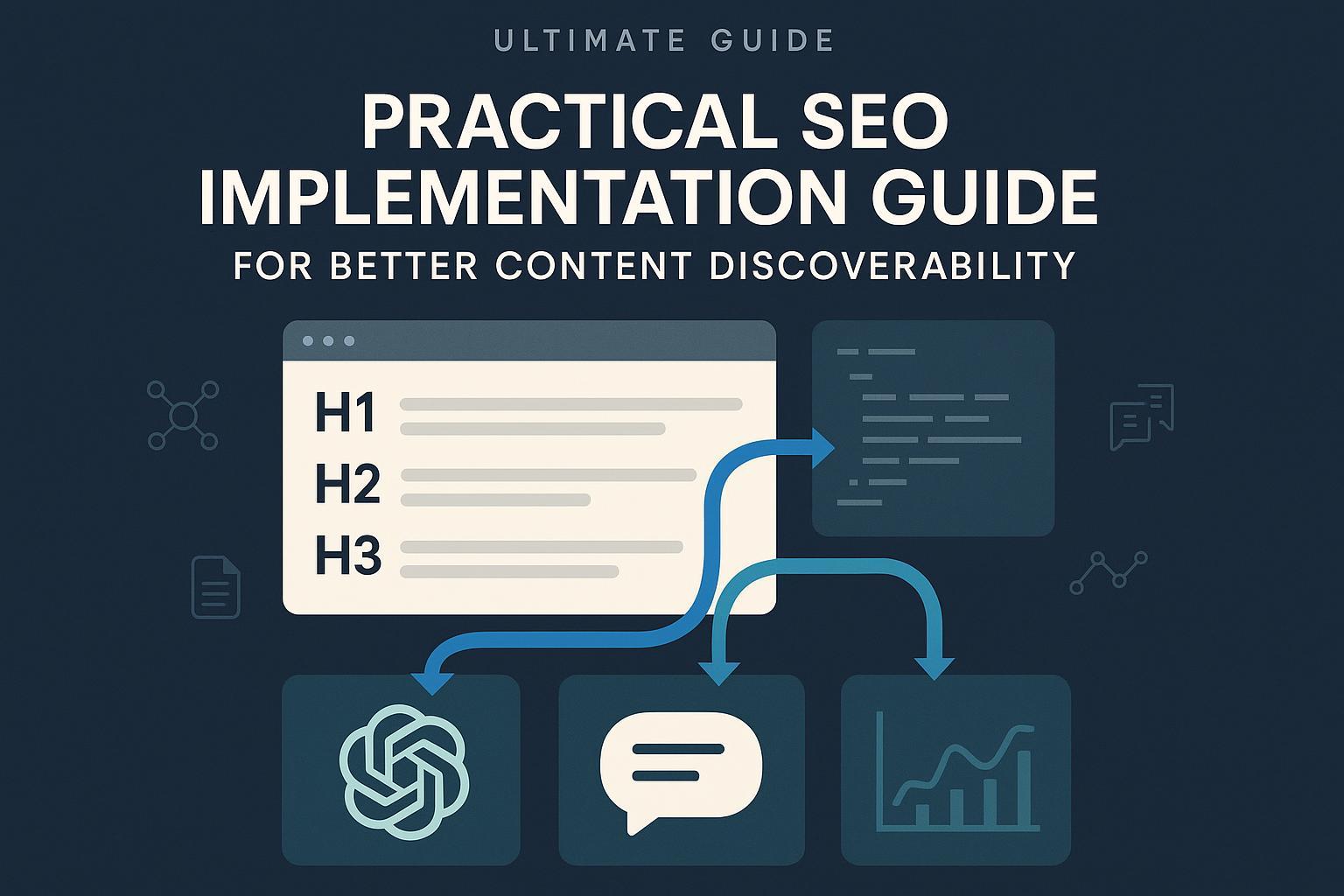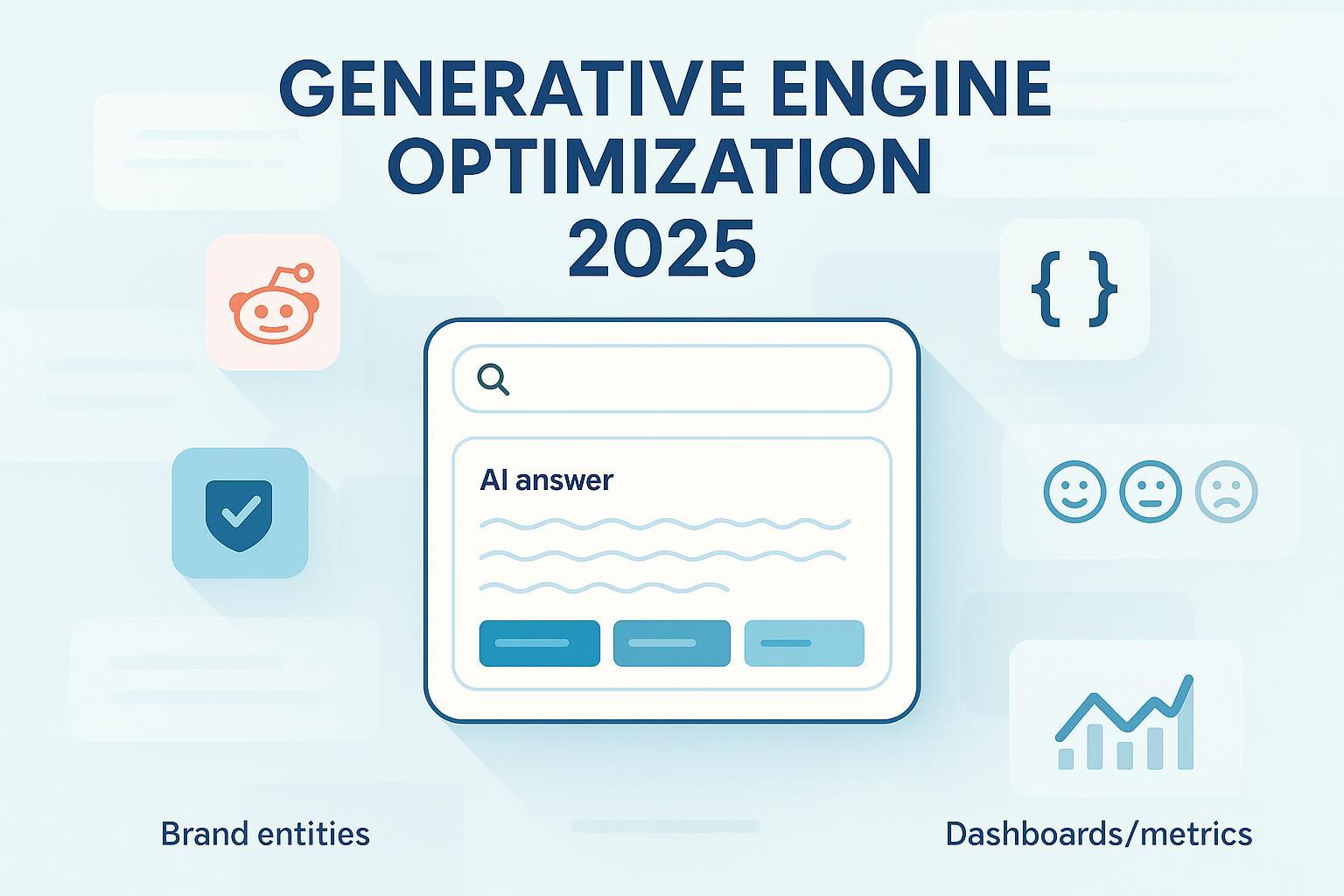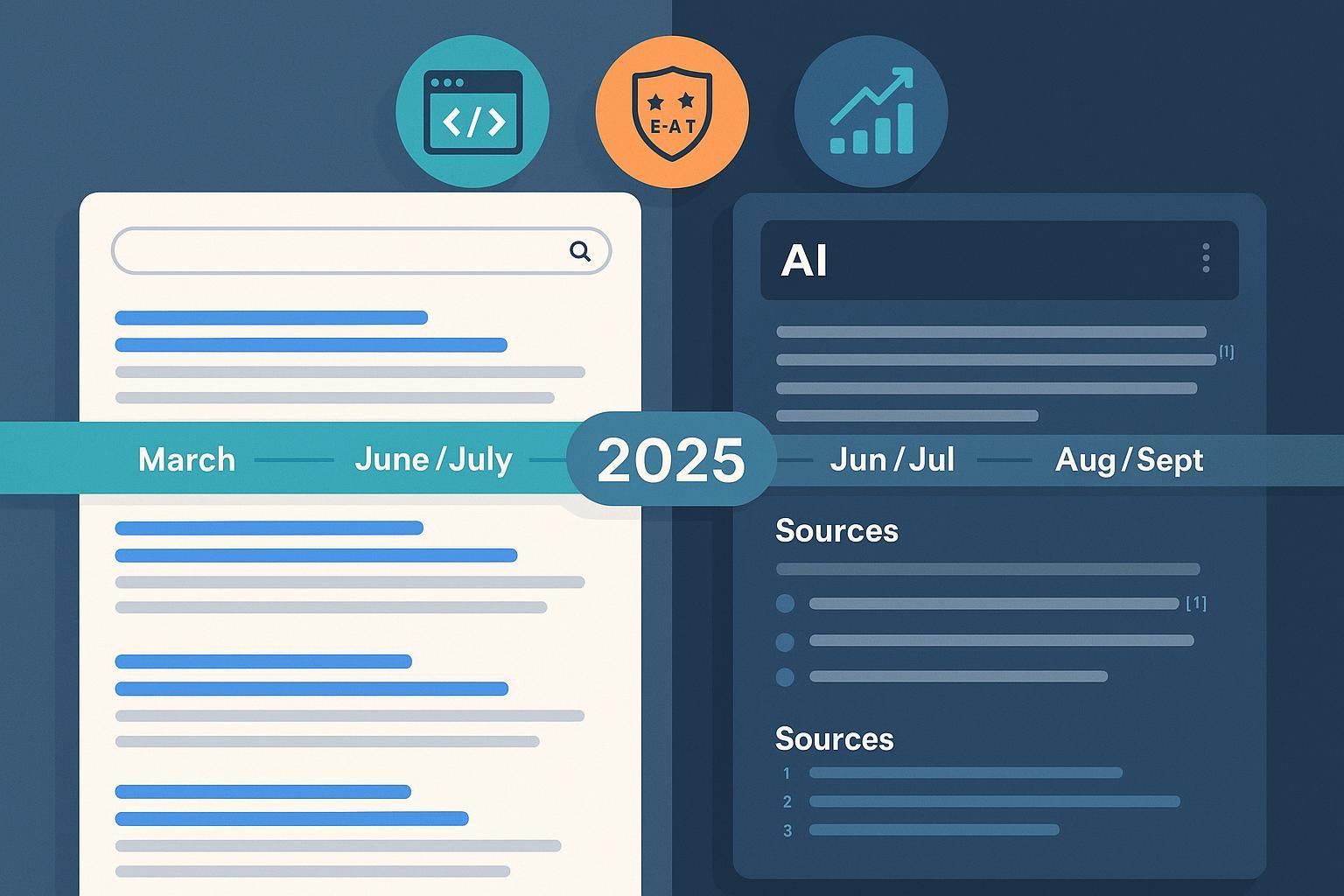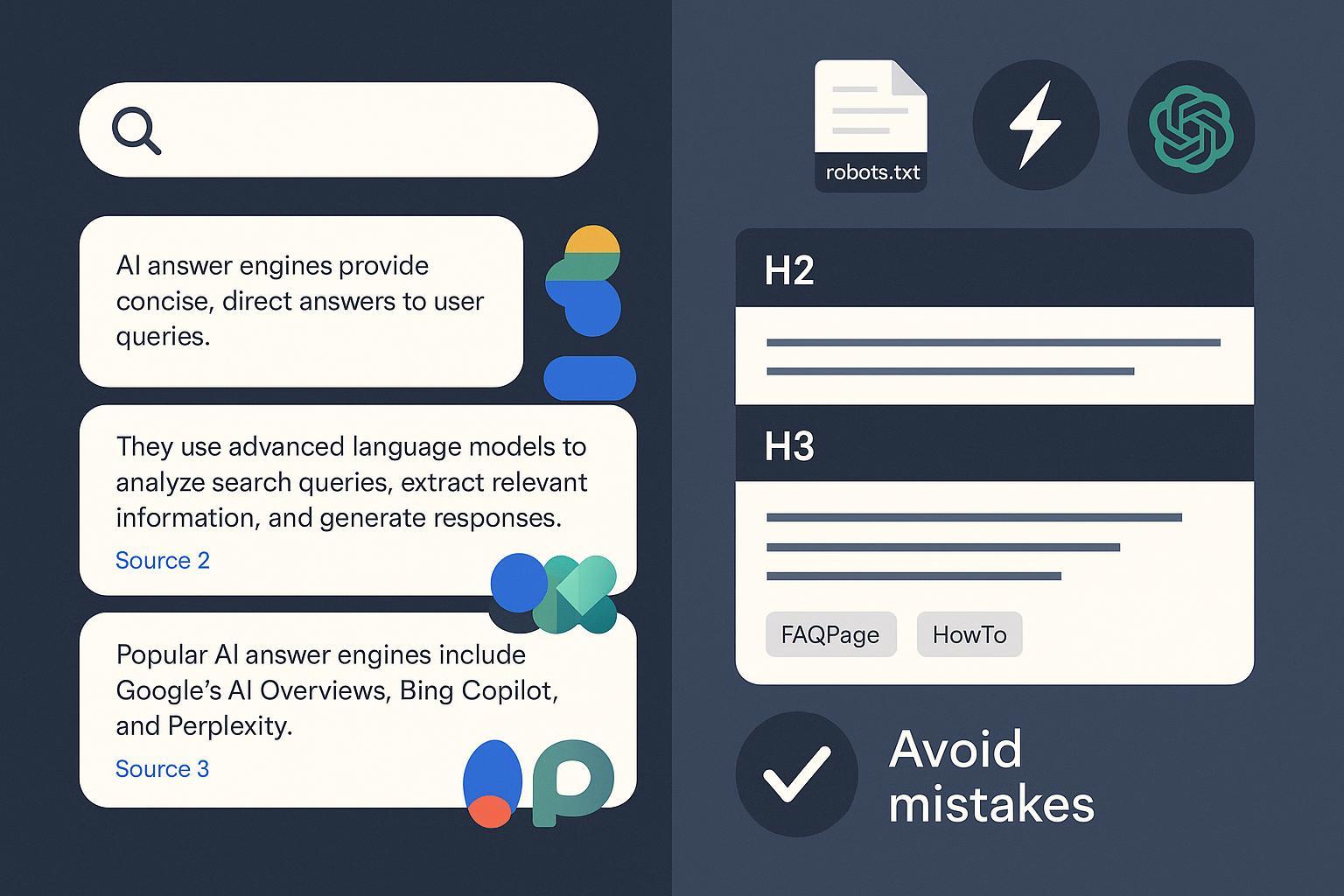Best Practices: Boost AI Visibility with Citations & Brand Mentions
Discover actionable best practices to increase visibility in AI search engines using citations and brand mentions—no traditional backlinks required. Includes workflows & KPI tracking for professionals.

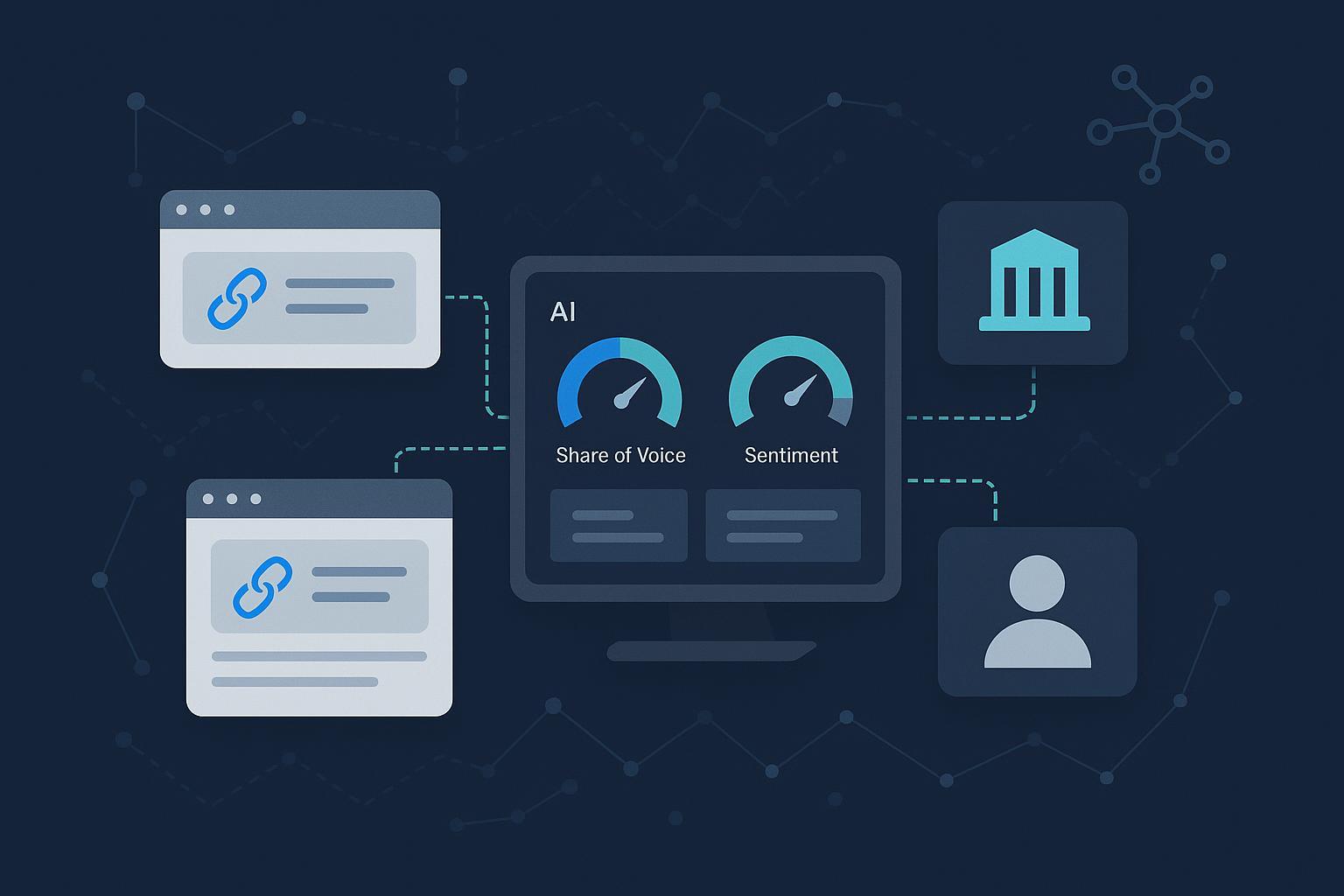
AI answer engines have changed the rules. In Google’s AI Overviews, Bing/Copilot, Perplexity, and ChatGPT with browsing, your visibility increasingly depends on whether your brand is recognized as a trusted entity and whether your pages are cited as sources—not on the raw volume of backlinks. In practice, this means you win by earning accurate, authoritative mentions and citations that are easy for machines to extract and for editors—and AI systems—to trust.
Below is the practitioner playbook I use with brands that want measurable lift in AI-driven visibility, without chasing traditional link volume.
How AI answer engines surface citations (and why mentions beat backlinks here)
- AI features synthesize answers and typically display a small set of citations (often 2–3 links) alongside or beneath the summary. Google emphasizes content helpfulness, E‑E‑A‑T, and technical eligibility rather than disclosing exact citation-selection rules; see Google’s guidance in the 2025 documentation for AI features and your website.
- Recency matters. A 2025 analysis from Seer Interactive found that roughly 85% of AI Overview citations came from pages published in 2023–2025, with 44% in 2025 and ~30% in 2024—underscoring the signal value of freshness according to Seer Interactive’s 2025 study.
- Visibility doesn’t always equal clicks. Across tens of thousands of queries, Search Engine Land reported in 2025 that AI Overviews can approximate the visibility of position ~6 but deliver fewer clicks; see their analysis in AI Overview citations and clicks: what to do next (2025). Plan for conversions via micro-signals and proactive funnels.
- Grounding is the north star. In developer-facing products, Google demonstrates how citations tie to source grounding checks and support scores—useful for understanding why clear, well-referenced content wins. See Google Cloud’s Check grounding for Vertex AI Search (2025).
- Reliability varies. Journalistic evaluations have documented inaccurate or incomplete citations across engines; the Tow Center at Columbia Journalism Review compared eight AI search engines in 2025 and flagged citation quality problems in their comparative analysis. Treat QA as mandatory.
The visibility playbook: Earn citations and brand mentions that AI will trust
This workflow is designed to be repeatable across industries. Run it in sprints and measure against AI-specific KPIs (defined later).
1) On-page: Make your content extraction-ready and entity-strong
-
Nail entity signals and authorship
- Use consistent organization and person naming across your site and public profiles.
- Add Organization, Person, Article, FAQ, Product schema where appropriate. Keep JSON‑LD valid, include author credentials and affiliations, and expose last‑updated timestamps.
- Maintain canonical pages that assert key facts about your brand, products, and experts—including sameAs links to major profiles.
-
Structure content to be cited
- Create concise “answer paragraphs” (40–80 words) that directly address common prompts at the top of relevant pages.
- Include evidence boxes with primary‑source references and simple data tables; prefer original datasets when possible.
- Use scannable H2/H3 sections aligned to intent: definitions, steps, examples, and FAQs.
-
Validate technical eligibility
- Keep pages fast, indexable, and mobile‑friendly.
- Ensure schema passes validation; fix nesting and reference errors.
-
Internal linking for topical authority
- Connect pillar pages and supporting articles with descriptive, context‑rich anchors. Build clusters that reinforce entity expertise. For deeper patterns, see Building Topical Authority for AI Engines.
Common pitfalls to avoid
- Overlong intros and thin expert credentials.
- Unverifiable claims without sources.
- Outdated content (no last updated, stale data).
2) Off‑site: Build credible mentions and editorial corroboration
-
PR and editorial placements
- Pitch expert commentary to trade outlets. Offer original data cuts or concise how‑to frameworks that editors can quote.
- Target domains that answer engines regularly surface for your topics (industry trades, recognized blogs, .gov/.edu where relevant).
-
Reviews and UGC ecosystems
- Encourage authentic reviews on platforms AI engines tap: Google Business Profiles, category review sites, and credible forums.
- Participate in Reddit/Quora thoughtfully: share non‑promotional, factual answers and cite primary sources.
-
Digital profile corroboration
- Align facts across Crunchbase, Wikidata, LinkedIn, and industry directories. Keep naming, product descriptions, and leadership bios consistent.
3) Hallucination mitigation and accuracy controls
- Publish claim‑checked content with inline references. Maintain a public “corrections and clarifications” page for sensitive topics.
- For brand‑owned assistants, use retrieval‑augmented generation (RAG) with grounding checks and support‑score thresholds; add human review for high‑risk topics. Google documents grounding workflows in Vertex AI Search guidance (2025).
- Monitor AI answers for your brand; log inaccuracies and submit feedback through available channels. Respond with timely explainers and updated FAQs when errors propagate.
4) Example: Operationalizing monitoring and optimization in practice
- Set a weekly cadence to capture how engines reference your brand across defined prompts (by topic and intent), track citation sources, and flag sentiment changes. Use dashboards that roll up Share of Voice (SOV), citation frequency, sentiment ratio, and authority mix.
- Pair monitoring with content actions: when you earn a mention, update the cited page for freshness and clarity; when you lose one, inspect competing sources and patch gaps (schema, evidence boxes, clarity of answers).
- Introduce a tool to streamline cross‑engine monitoring and sentiment. For instance, Geneo centralizes AI citations, mentions, cross‑engine share of voice, and sentiment tracking with multi‑brand collaboration. Disclosure: Geneo is our product.
5) Checklists you can run this sprint
On‑page extraction readiness (10‑point check)
- Entity schema present (Org/Person/Article/FAQ/Product)
- Valid JSON‑LD; author credentials and affiliations
- Last‑updated timestamps visible
- 40–80 word answer paragraph near the top
- Evidence box with primary sources
- Scannable H2/H3 aligned to intent
- Fast, indexable, mobile‑friendly
- Canonicals and sameAs clean
- Internal links reinforce clusters
- Freshness review scheduled monthly
Off‑site mention building (8‑point check)
- Quarterly editorial calendar with expert quotes
- Original dataset or benchmark to pitch
- Targeted industry trades list by topic
- Review platforms prioritized and updated
- Reddit/Quora participation plan (non‑promo)
- Crunchbase/Wikidata facts reconciled
- Social bios standardized
- Rapid response PR template ready
For advanced content structuring and extraction, see Schema Markup for AI Citations and a broader Generative Engine Optimization best practices playbook.
KPI framework: Measure what matters (weekly ops, monthly rollups)
Define KPIs that reflect AI visibility rather than classic blue‑link rankings. Here are the ones I’ve found most reliable:
-
AI Overview Share of Voice (SOV)
- Definition: Percentage of tested prompts where your brand is mentioned or cited.
- Formula:
(Prompts with brand mentions or citations ÷ Total prompts tested) × 100.
-
Citation Frequency by Query Class
- Definition: Rate at which your URLs are cited within a defined query segment (informational, commercial, navigational).
- Formula:
Citations in class ÷ Total prompts in class.
-
Mention Sentiment Score in AI Answers
- Definition: Net sentiment ratio across captured AI answers referencing your brand.
- Formula:
(Positive – Negative) ÷ Total mentions; validate with manual QA.
-
Cited Source Authority Mix
- Definition: Weighted average authority of sources that cite/mention your brand—or that AI references while discussing your brand.
- Formula:
Σ(Source authority score × weight) ÷ Total sources.
-
AI Engagement Proxy (CTR proxy)
- Definition: Micro‑conversion rate associated with AI‑linked landing pages.
- Formula:
(Micro‑conversions from AI‑linked pages ÷ Estimated AI impressions) × 100.
Operationalizing measurement
- Cadence: Weekly tracking; monthly executive rollups. Segment by engine and intent class.
- Dashboards: Blend AI visibility tools with GA4/CRM. Use alert thresholds (e.g., ±10% WoW SOV change, new negative sentiment flags, lost citation alerts).
- QA procedures: Manually validate 10–20% of captured answers each cycle; maintain a “hallucination ledger” with remediation steps and timestamps.
For deeper measurement design, see our AI Visibility KPIs best practices.
Case snippets: What worked, what didn’t
- Freshness and evidence boxes: In B2B SaaS, we saw citations return after adding a dated evidence box with a client‑run benchmark and updating the answer paragraph monthly. This aligns with the recency patterns reported in 2025 by Seer Interactive.
- Editorial corroboration over link volume: A consumer brand regained mention coverage after earning two trade‑press articles with expert quotes and first‑party data. No net new backlinks were needed; the key was authority and extractable facts.
- Hallucination response: A niche DTC brand confronted a misattributed feature in AI summaries. A correction post (clearly cited), coordinated PR note, and updated FAQ reduced negative sentiment within two weeks, and the incorrect claim disappeared from most answers thereafter.
Trade‑offs to acknowledge
- Original data creation is resource‑intensive but pays off in durable mentions.
- UGC participation carries moderation overhead; stay factual and avoid promotional tone.
- Over‑automation risks errors and reputation damage; keep humans in the loop for sensitive topics.
Tools to monitor and optimize AI citations and mentions
Use a mix of category tools and internal processes; features and pricing evolve quickly. Objectively assess fit by size, governance needs, and data access.
- Multi‑engine visibility trackers: Platforms that capture cross‑engine AI Overviews/answers, citations, and mentions; compete on coverage and reporting. Evaluate for sentiment analysis, prompt set management, and historical comparisons.
- Workflow accelerators: Systems that flag lost citations, negative sentiment spikes, or freshness gaps and connect to editorial calendars.
- Example tool: Geneo focuses on AI search visibility monitoring across ChatGPT, Perplexity, Google AI Overviews, and Bing/Copilot, including real‑time mention/citation tracking, sentiment analysis, and content strategy suggestions. It supports multi‑brand collaboration and historical comparisons. Disclosure reminder: Geneo is our product.
Complementary practices
- Build prompt sets per topic cluster and intent; refresh quarterly.
- Maintain an internal source‑authority tier list (e.g., .gov/.edu, recognized trades, vetted blogs) to prioritize PR outreach.
Troubleshooting: If visibility stalls or sentiment turns negative
- Lost citations: Compare your page vs. the newly cited source. Patch freshness, clarity, evidence, and schema gaps; strengthen author credentials.
- Zero‑result prompts: Expand your topical cluster, add concise answer paragraphs, and pursue editorial corroboration for core claims.
- Negative sentiment: Publish clarifications, coordinate PR, and provide updated guides; track net sentiment weekly until stabilized.
- Hallucinations: Log instances, submit feedback, publish correction posts, and add FAQs with verifiable references.
Pitfalls and limits to watch
- Chasing link volume without extractability: AI engines prefer clear, verifiable answers; backlinks alone won’t make your content citable.
- Ignoring QA: As the 2025 Tow Center work notes, citation reliability is imperfect. Human review is mandatory.
- Neglecting freshness: Recency bias is real; set monthly update cycles for critical pages.
- Over‑dependence on any single tool: Cross‑validate with manual sampling and multiple data sources.
FAQ and quick‑start checklist
Frequently asked questions
- Do I still need backlinks? Yes—for discovery and classic SEO. But for AI citations, prioritize extractability, authority, and corroborated facts.
- How long until I see changes? With weekly monitoring and monthly content updates, brands often see improved SOV and citation frequency within 4–8 weeks on targeted prompts.
- Can I influence which sources get cited? Indirectly—by publishing original data, earning editorial mentions, and structuring content that aligns with common prompts and grounding behaviors.
Quick‑start checklist (run in 30 days)
- Select 50–100 prompts by topic and intent; baseline SOV and citation frequency.
- Update 10 high‑value pages with answer paragraphs, evidence boxes, and schema.
- Pitch one original dataset or benchmark to two trade outlets.
- Standardize facts across public profiles; reconcile sameAs and bios.
- Stand up a dashboard with weekly alerts and a QA sampling process.
Staying current as AI search evolves
The rules are moving targets. Reconfirm your assumptions quarterly by sampling answers across engines. Keep an eye on official guidance—Google’s 2025 notes on AI features emphasize helpfulness and eligibility rather than link‑centric signals—and on emerging analyses of recency and citation behavior. For broader frameworks around answer‑engine optimization, see Generative Engine Optimization best practices.
Sources cited in context
- Google Search Central, 2025: AI features and your website.
- Seer Interactive, 2025: AI brand visibility and content recency study.
- Search Engine Land, 2025: AI Overview citations and clicks analysis.
- Google Cloud, 2025: Vertex AI Search Check grounding.
- Columbia Journalism Review (Tow Center), 2025: Comparative analysis of AI search engines’ citation performance.


